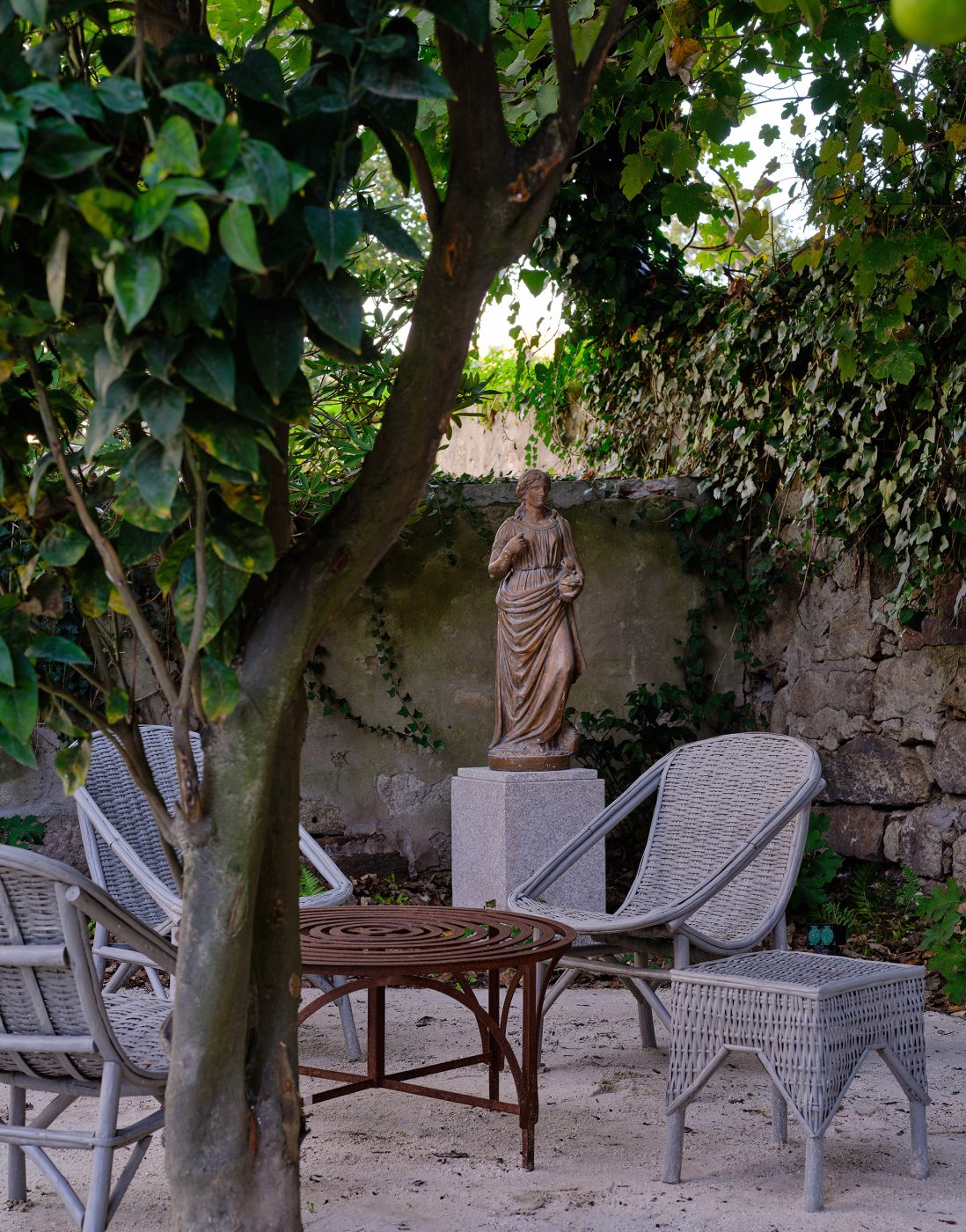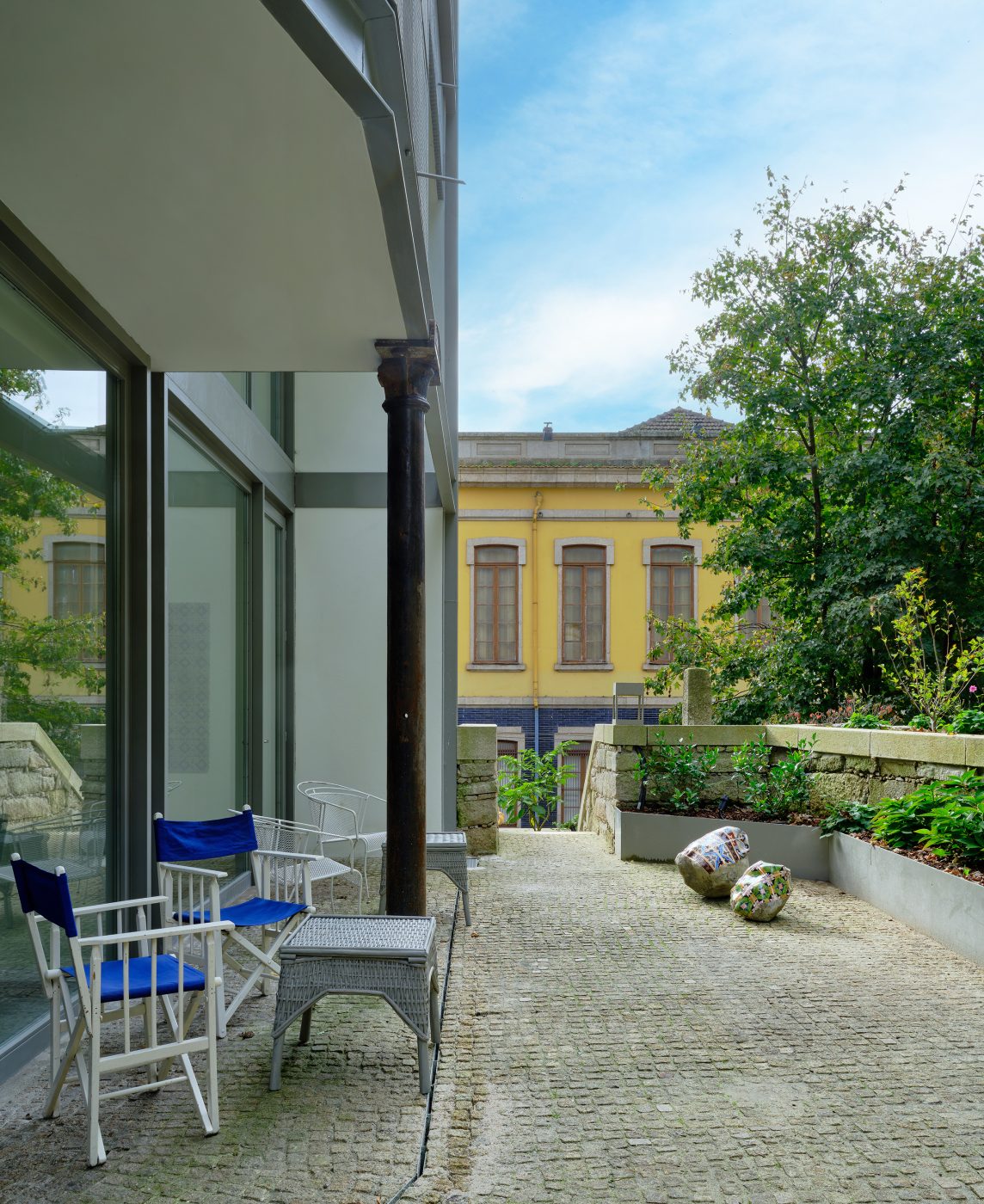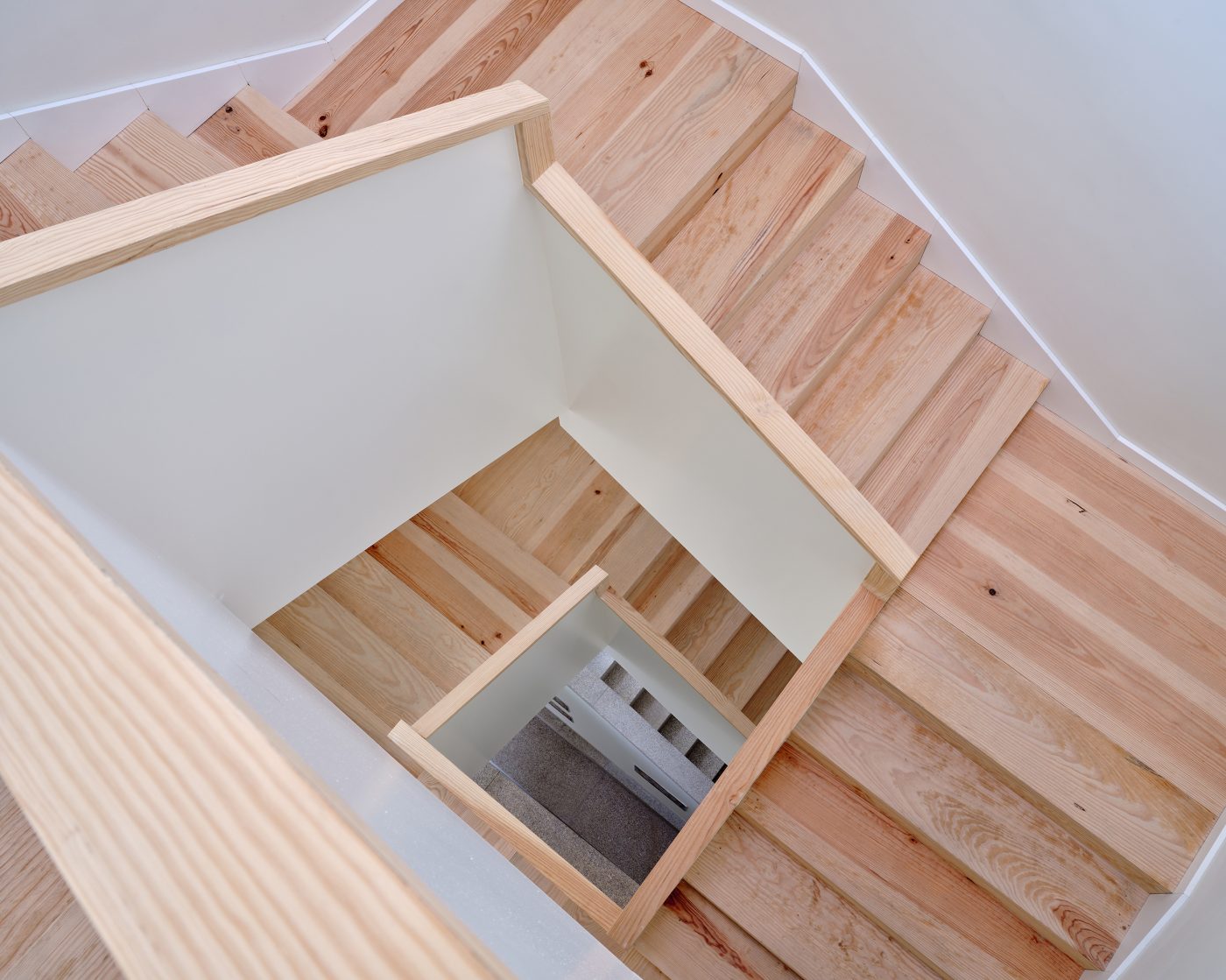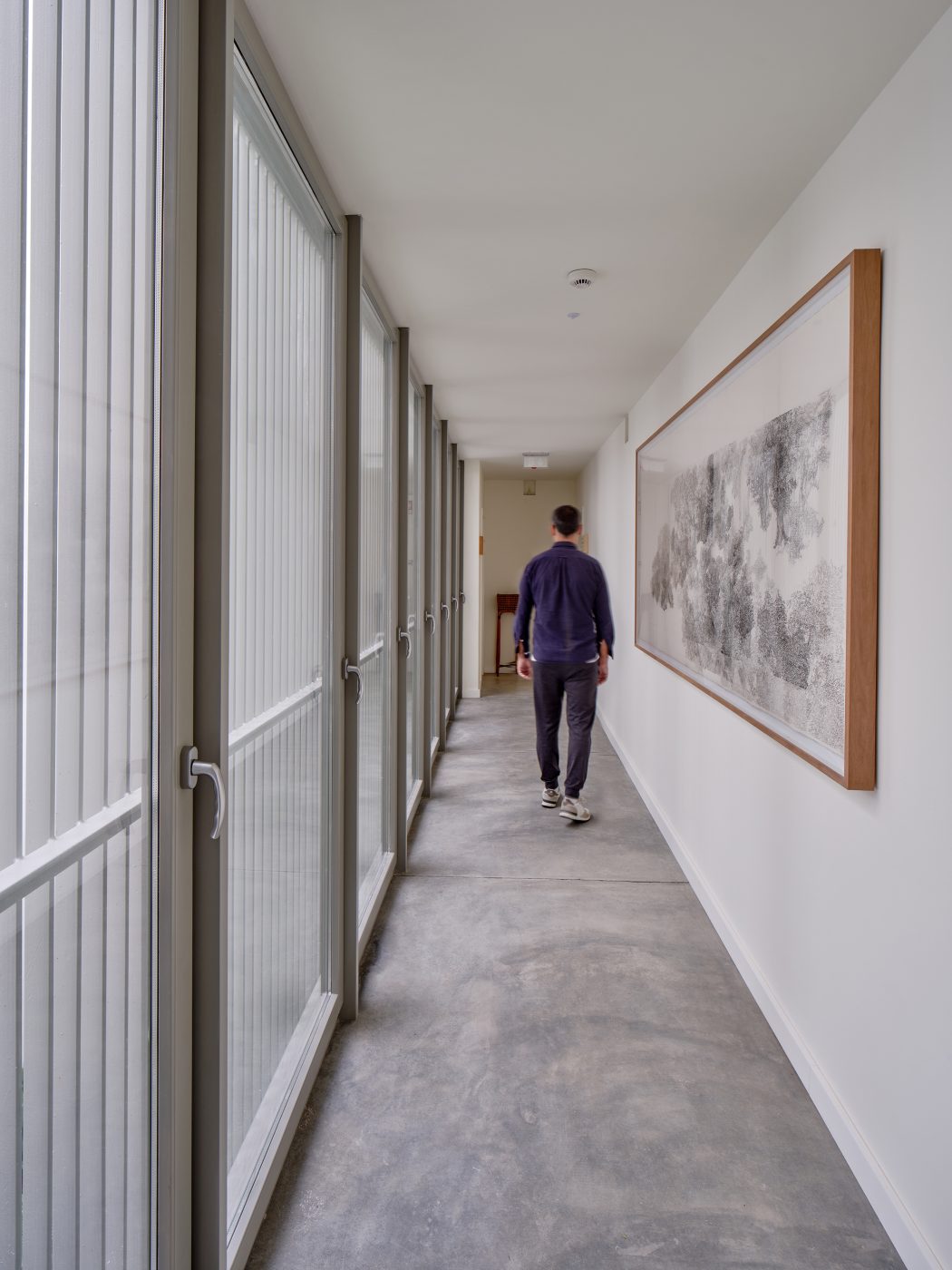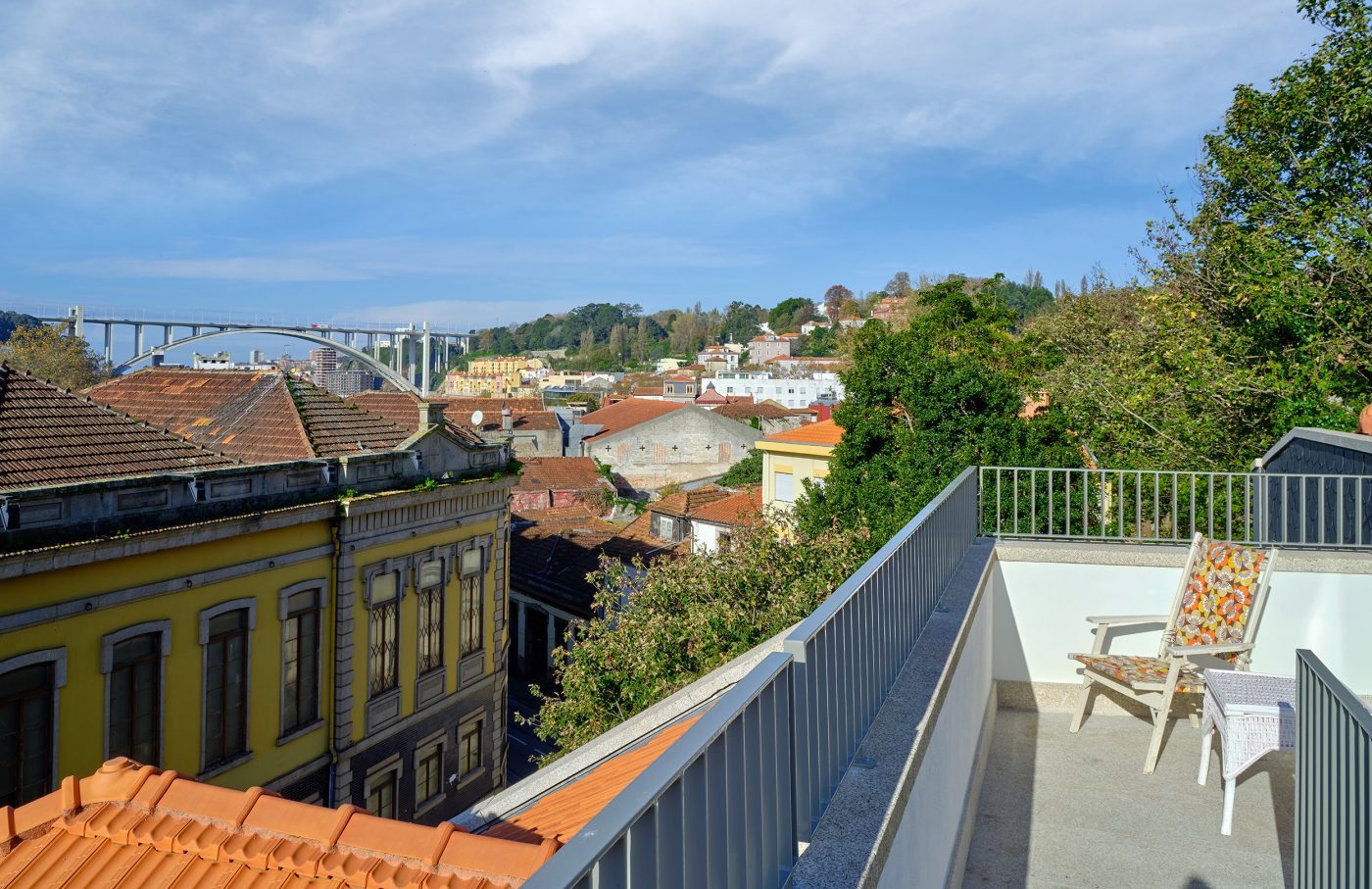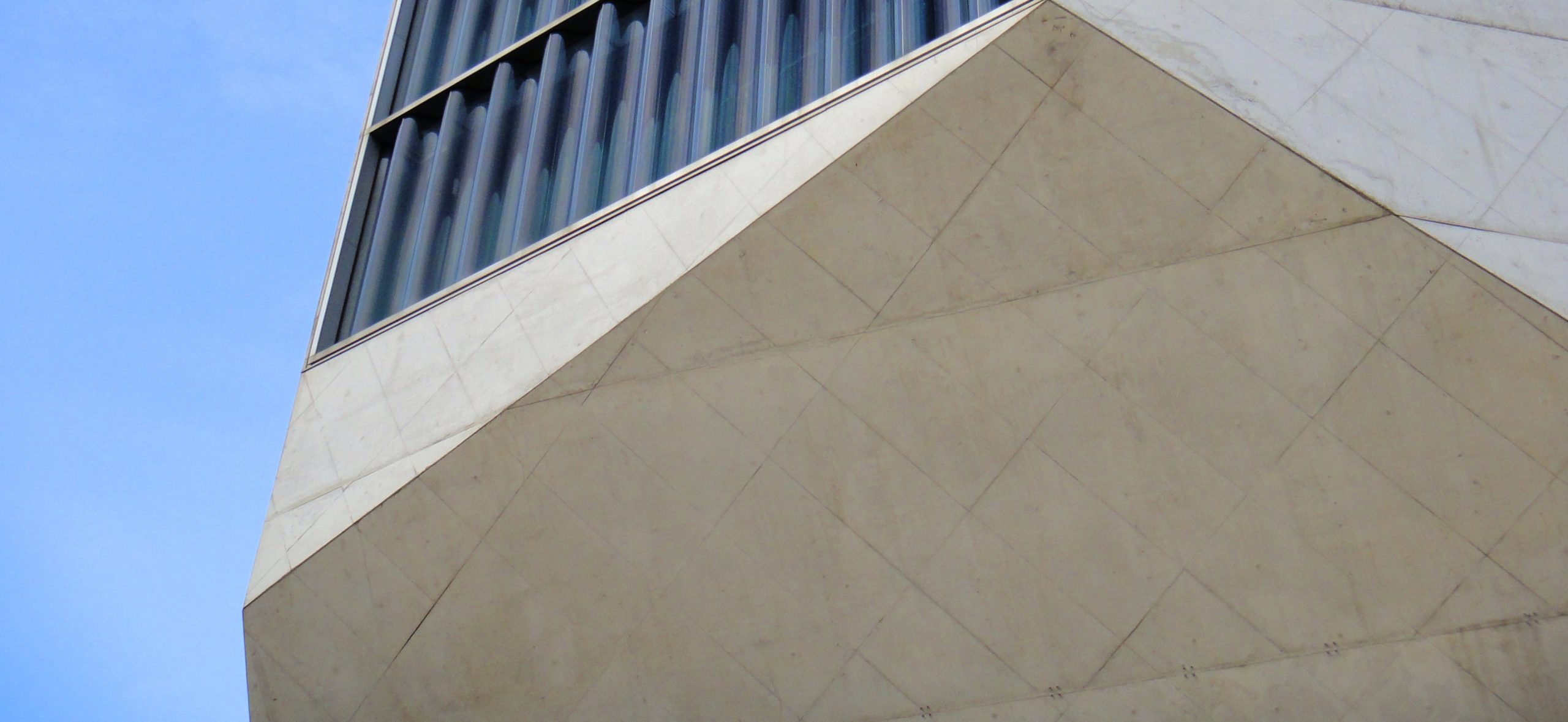A place to rest with the five senses
The building has various common areas for guests to enjoy. The most important one is the garden which maintains the existing terraced structure and that was lovingly restored by the landscape architect Jesús Moraime. The trees bring shade to the various terraces, lined from top to bottom with a pond, a solarium area, an area in the shade of the orange trees and a final terrace with a pergola and a lake.
The area for access to the building has a glazed, greenhouse style, pergola, that welcomes the guest with a fountain and a series of terracotta figures from the Devesas factory and from where the reception area and the gardens may be accessed. In the reception area, a map of the city of Porto welcomes the guest by providing information on the location of the historic earthenware factories, local points of interest, the earthenware collections and the building façades tiled with “azulejos” in the city.
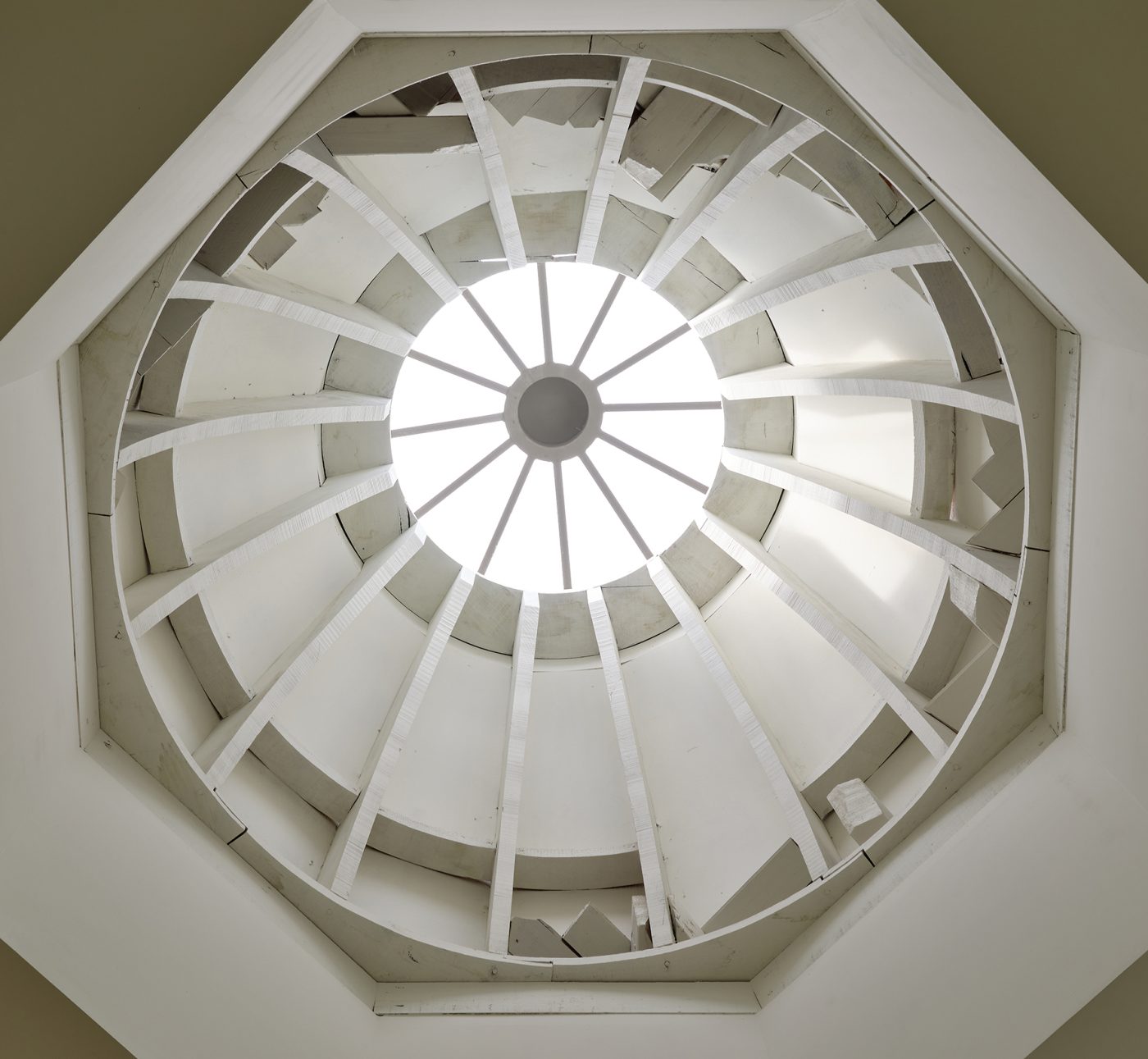
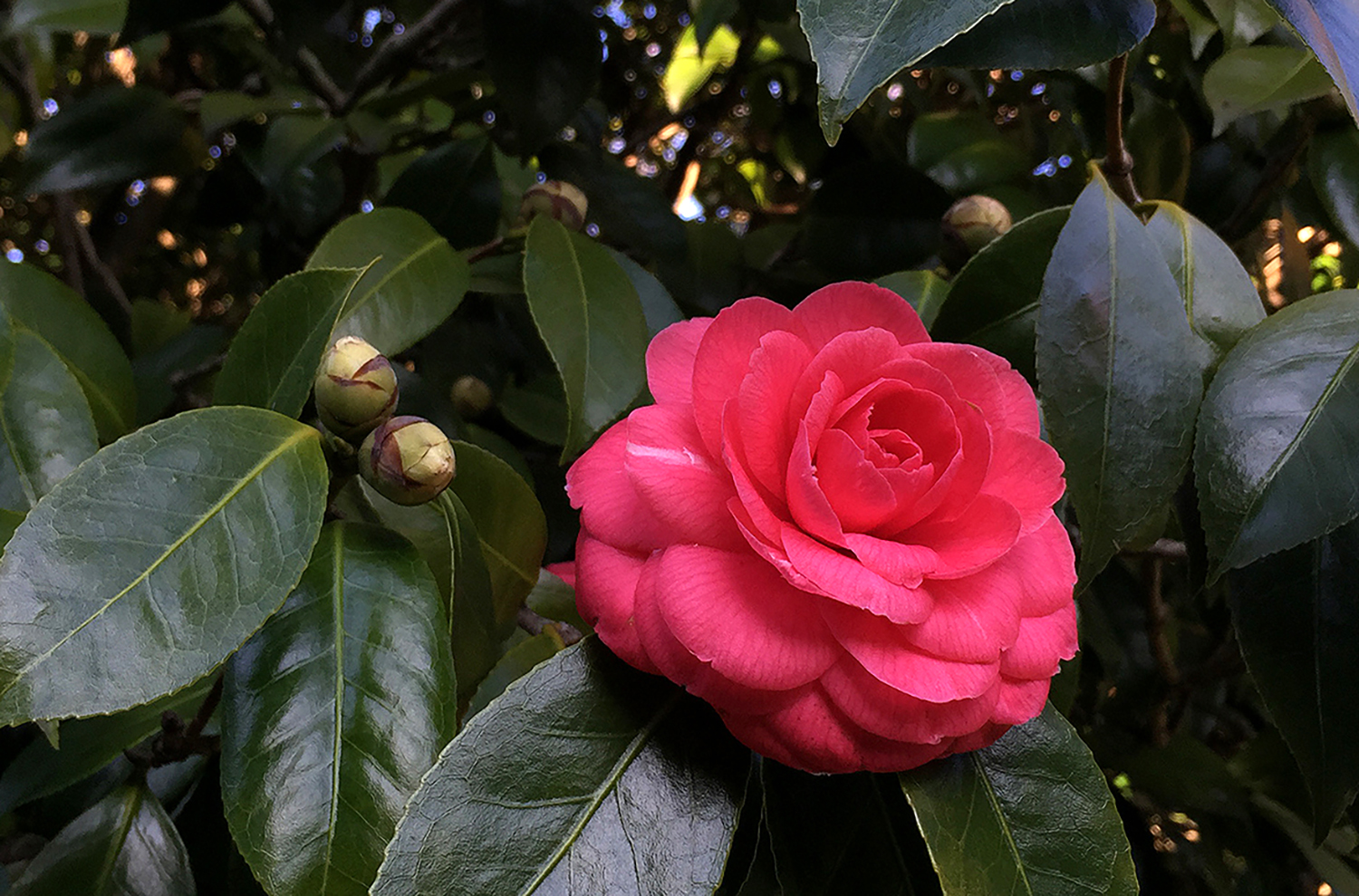
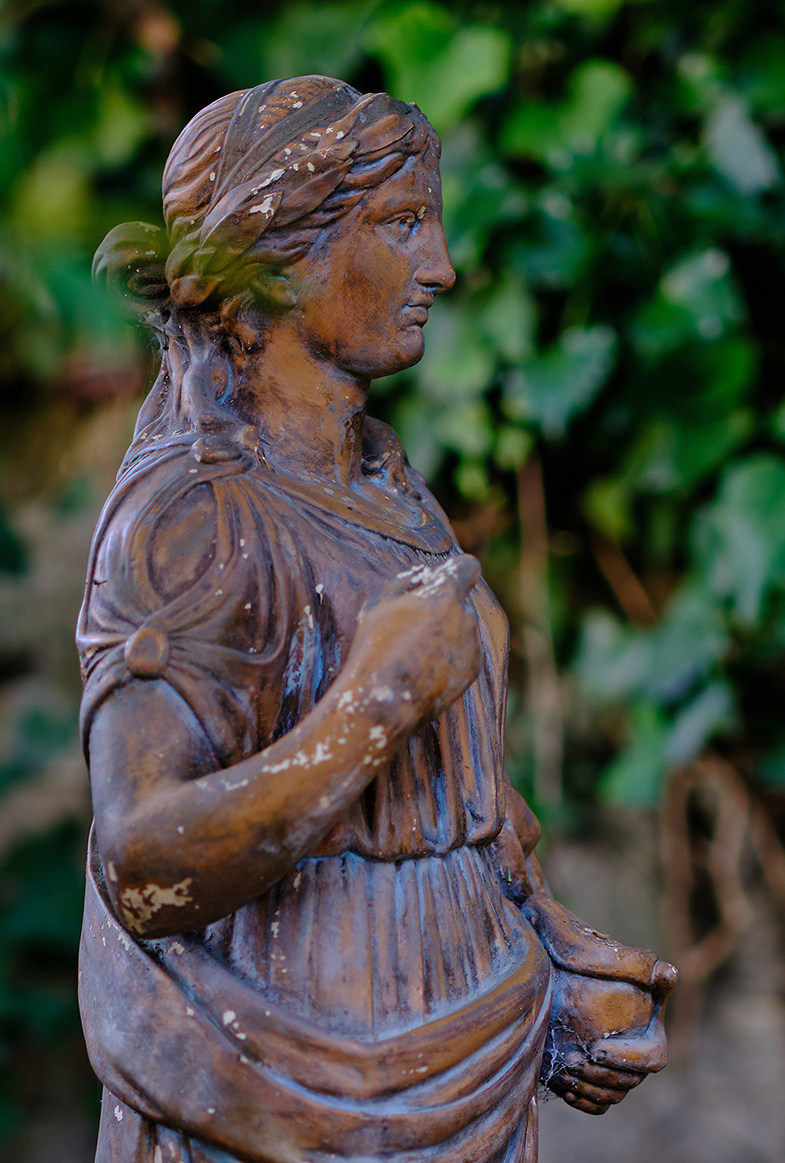
Garden
Our gardens are the perfect complement for making your stay even more pleasant and peaceful. This is the ideal spot for winding down after a visit to the city, enjoying the pond, reading in the shade of the trees or just contemplating how the light falls or listening to the birdsong.
In the gardens, the original structure has been maintained with three terraces that descend the slope towards the river. Originally, the gardens were used for the cultivation of garden produce, fruit and flowers and for the relaxation of the proprietors. On the lower level, there is a lake opposite the outlet for the water mine “mina de água”, a traditional system for collecting water in the orchards and gardens on the estates in this part of the city of Porto. Beneath the maple trees, from the seats beside the lake, it is possible to appreciate the water´s movement, or relax contemplating views of the street and the river beneath the pergola.
A series of steep steps lead up to the second terrace where the air is filled with the aroma of citrus, an ideal spot to read beneath the leaves of the orange and laurel trees.
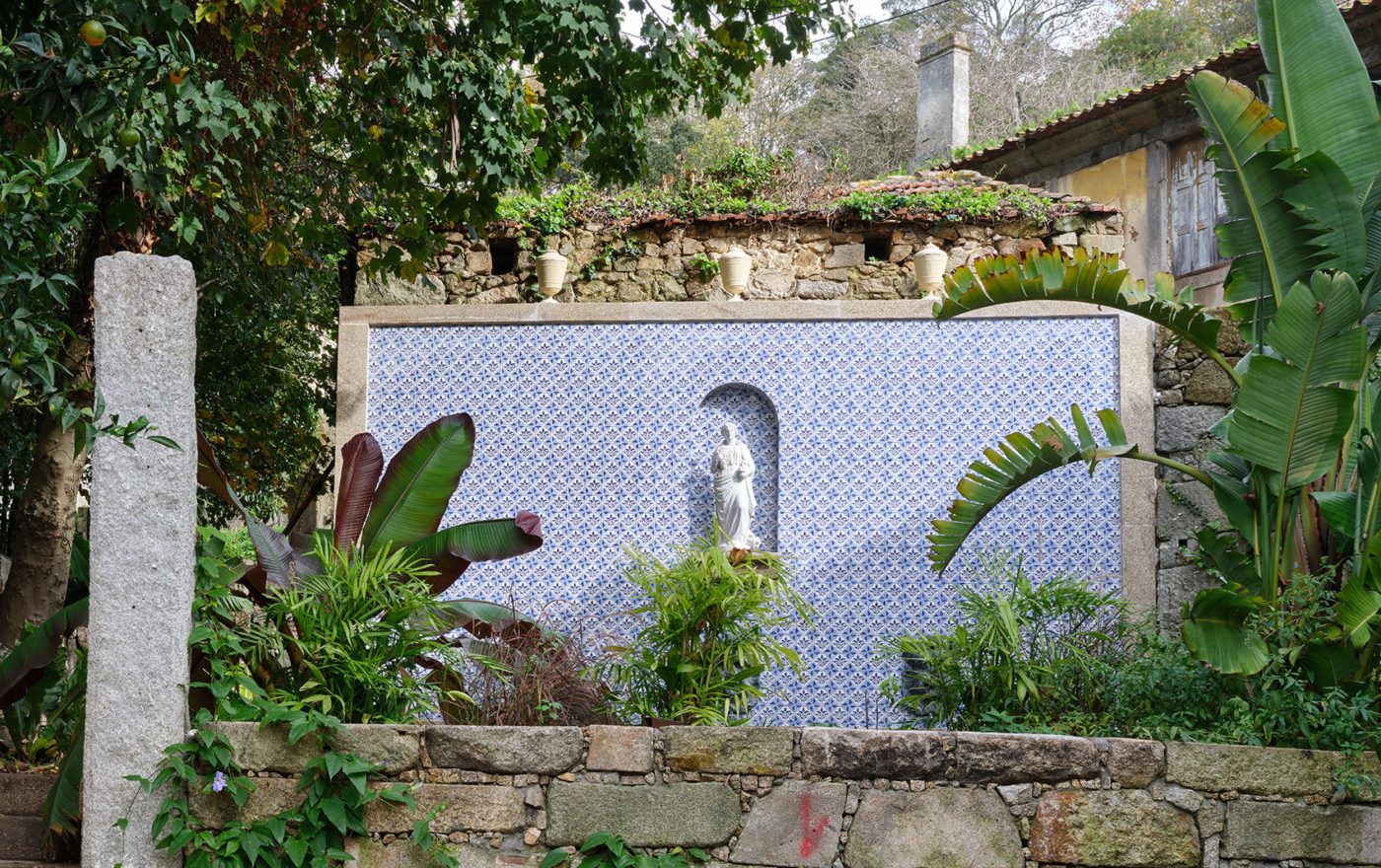
Pool
On the third level, at the very top of the gardens, there is a façade tiled with ´azulejos` and three bronze masks that supply water to the pond where it is possible to bathe.
Due to the limited size of the solarium and the number of sunbeds available, space needs to be booked beforehand and for a maximum of three hours a day. Hire of a towel for the pool costs 5.00€ and which should be used throughout.
The plants in the garden are the species that are traditional in gardens in the city of Porto and include camelias and other more tropical types that thrive in the humid and mild climate.
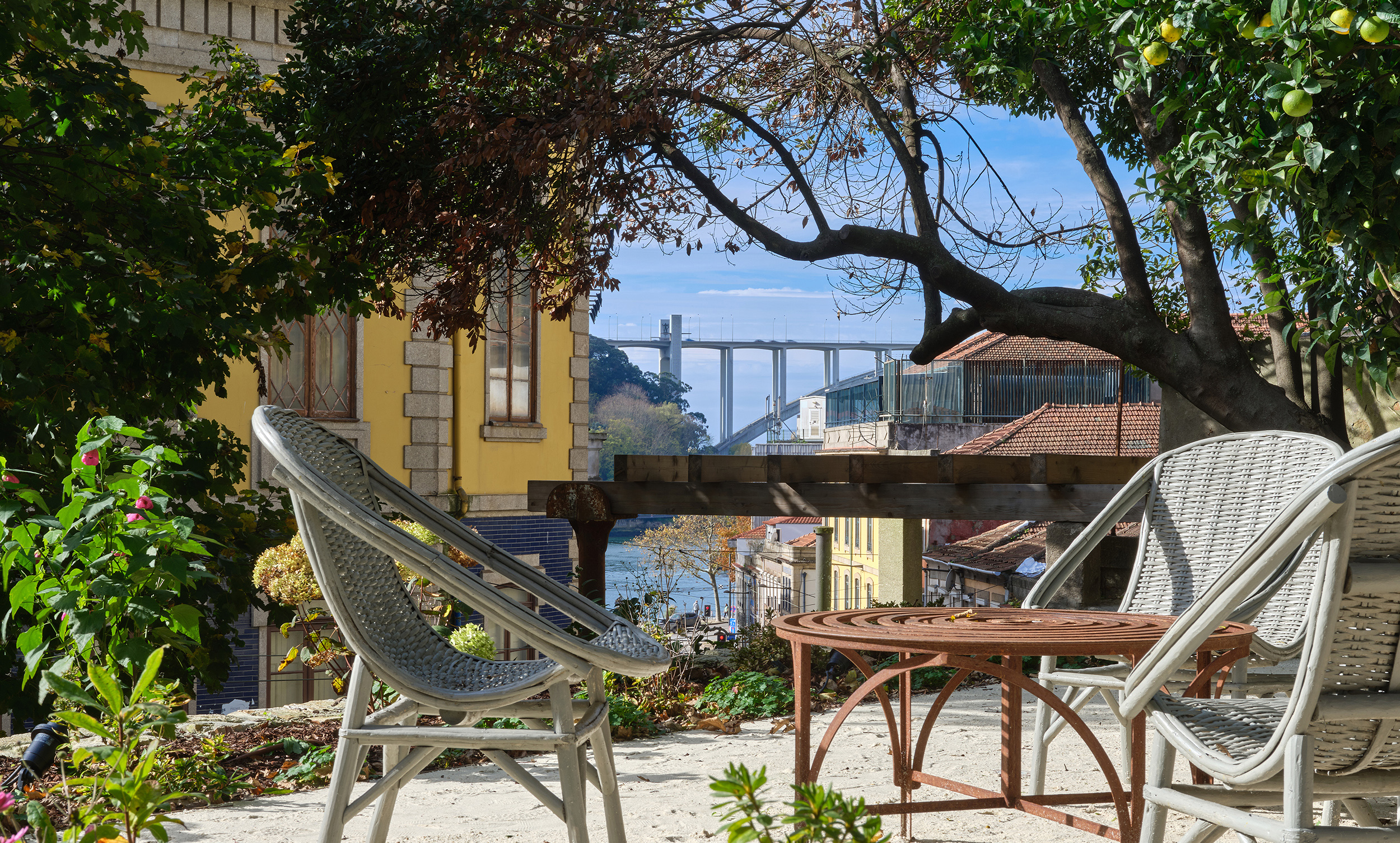
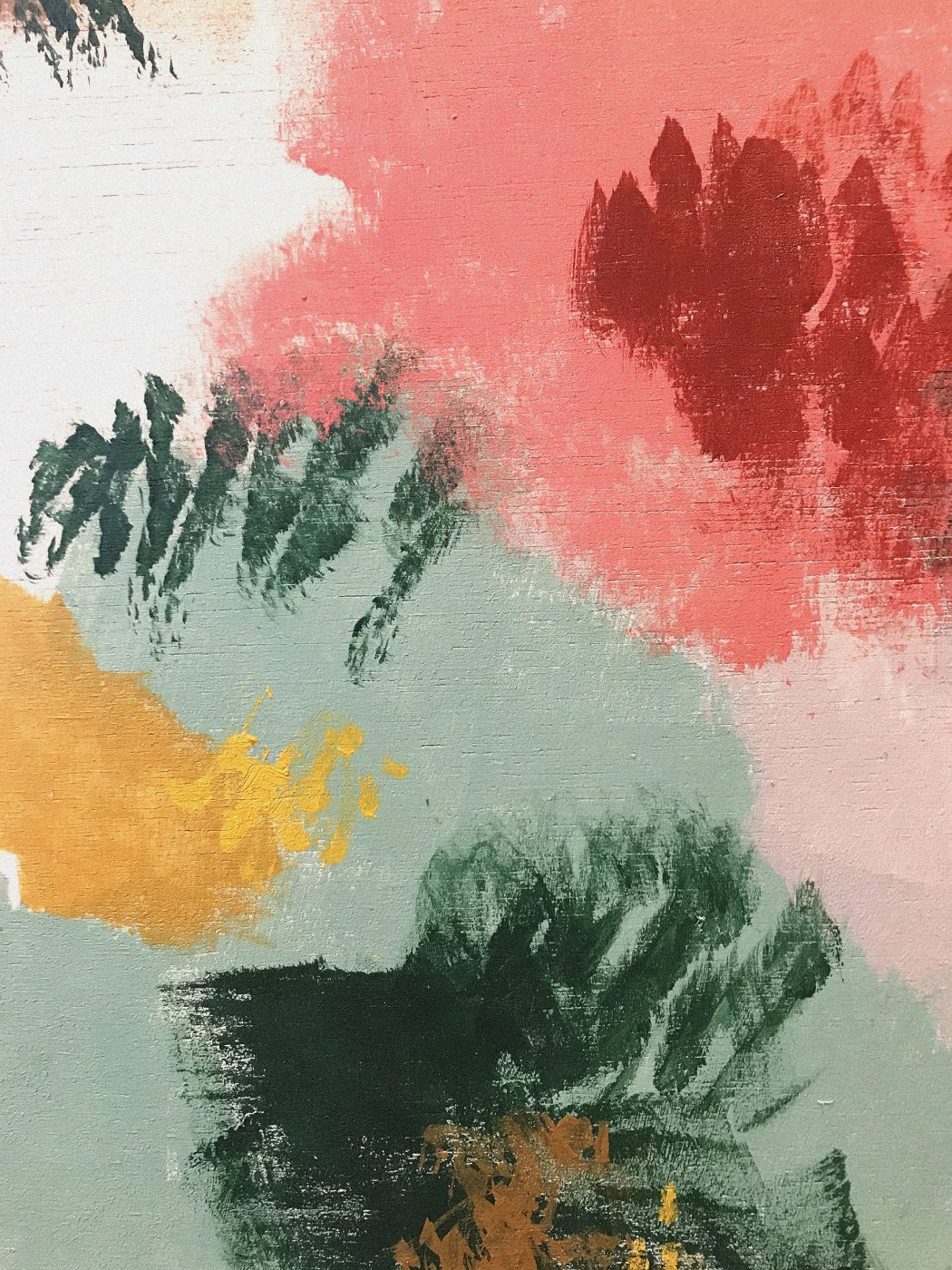
Reception, staircase and corridor
At the Reception a map of the city of Porto welcomes us and tells us the location of the historic ceramic factories and points of interest, collections of earthenware and tile facades in the city.
The stairways are a major part of the design, looking as they do onto the gardens and serving as a source of light for the interior of the building. Each landing is a source of information about the city´s history, the building itself and the Massarelos earthenware factory that lends its name to the house.
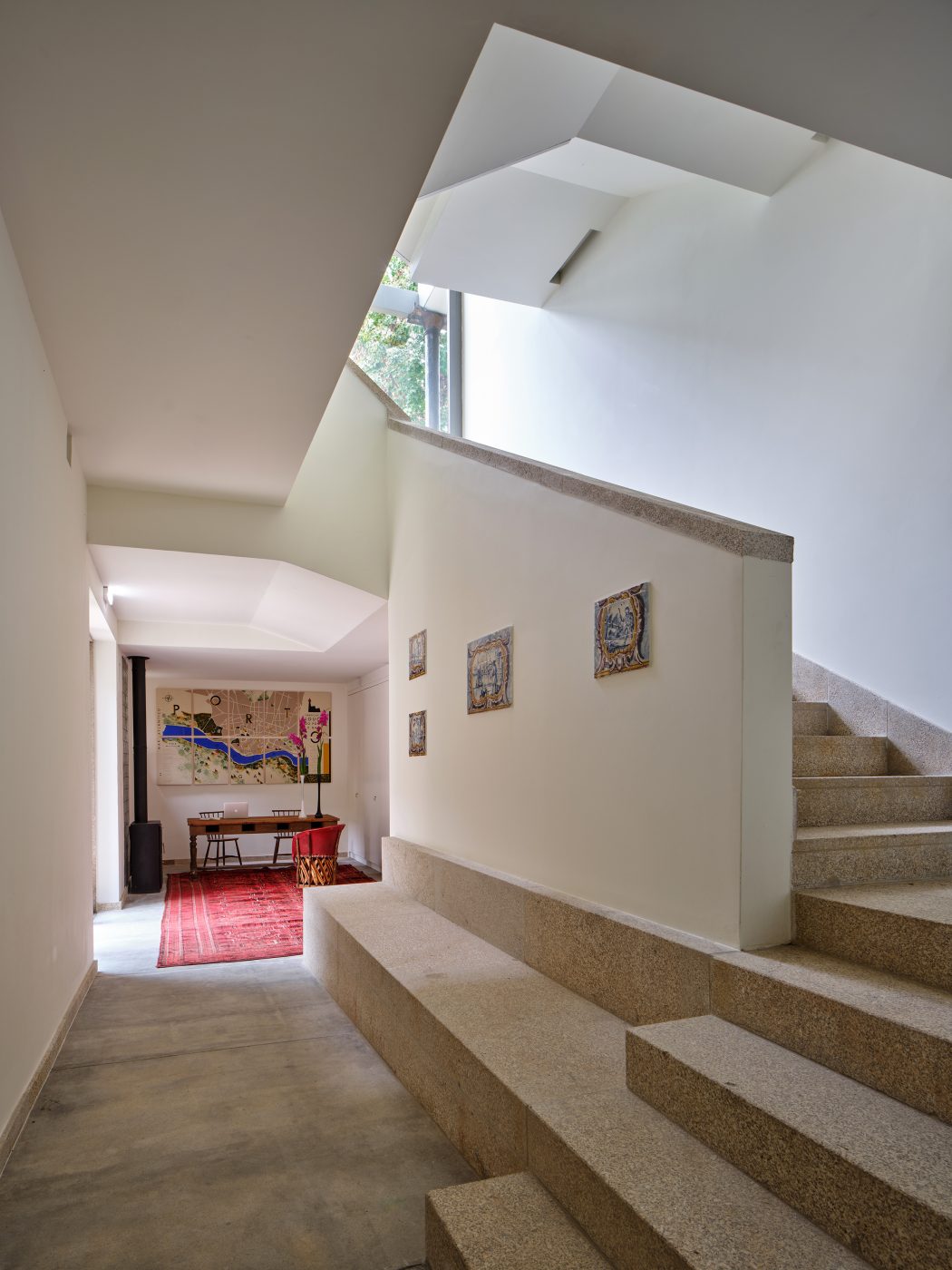
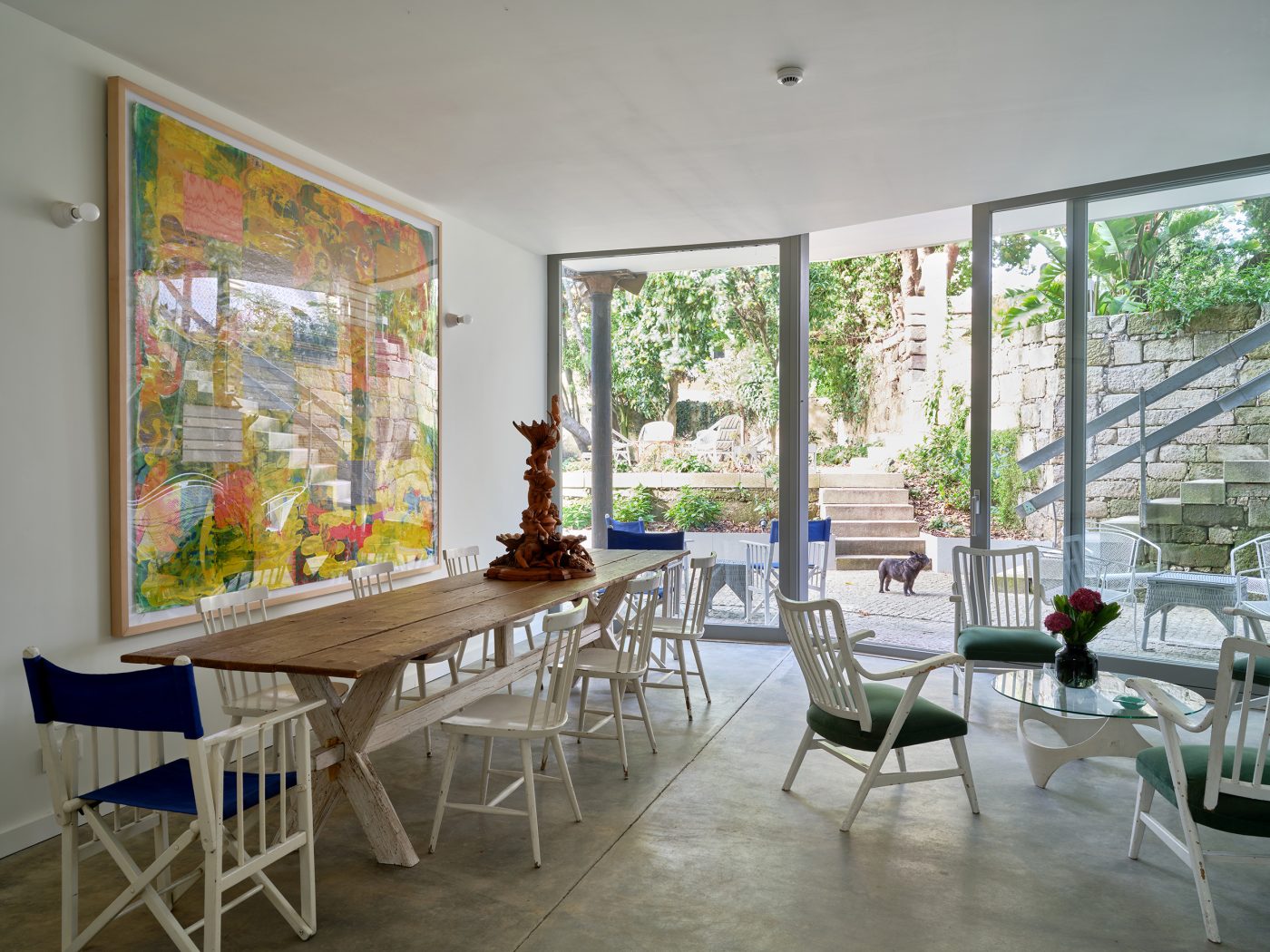
Living room to the garden
On the first floor there is a covered lounge that looks out onto the gardens, a zone that is perfect for enjoying a drink while looking out over the terraces of the external area.
Covered terrace to the garden
On the landing between the second and third floors, a covered terrace that opens onto the gardens, lends itself as an ideal spot for a moment´s reading.
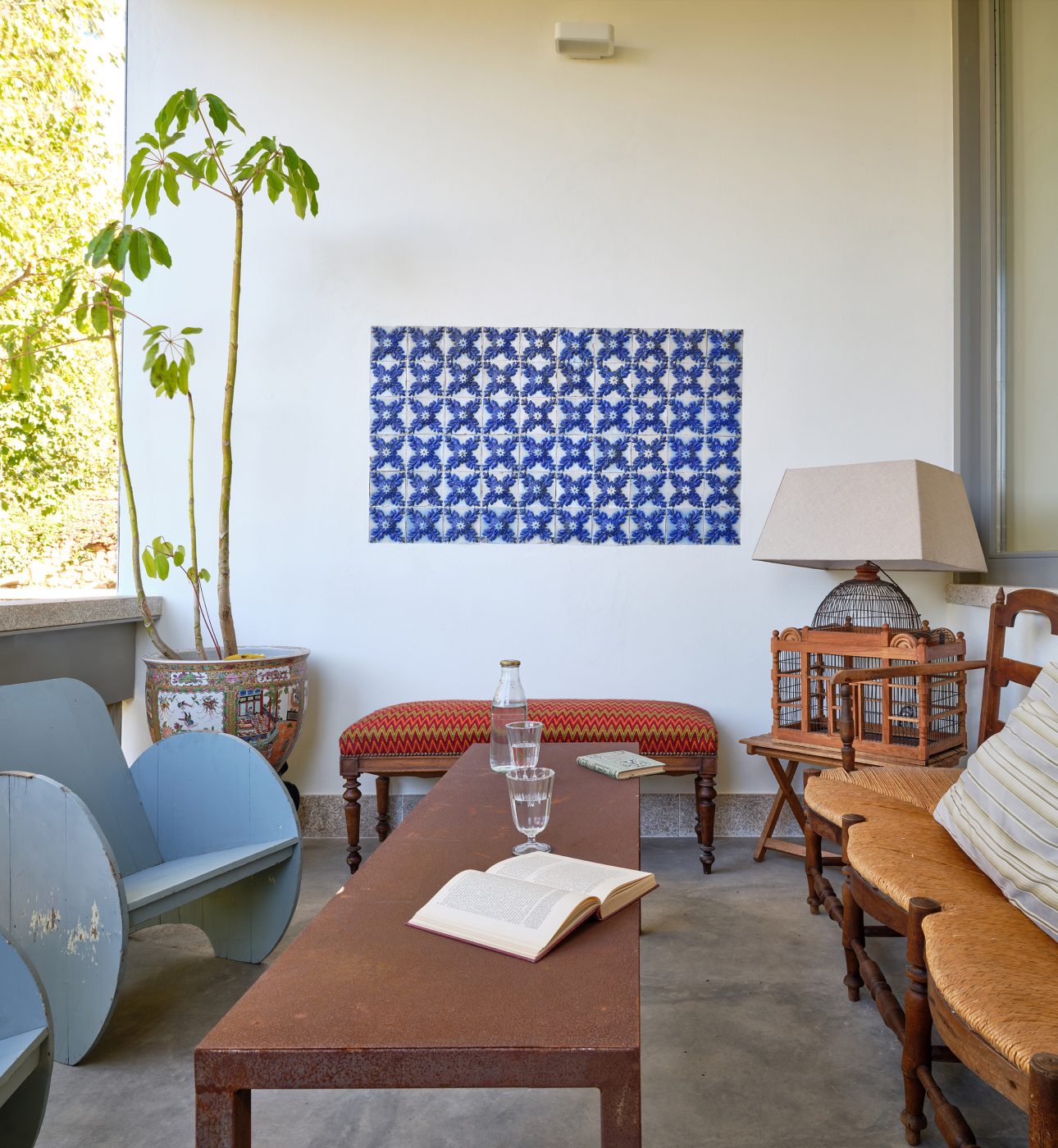
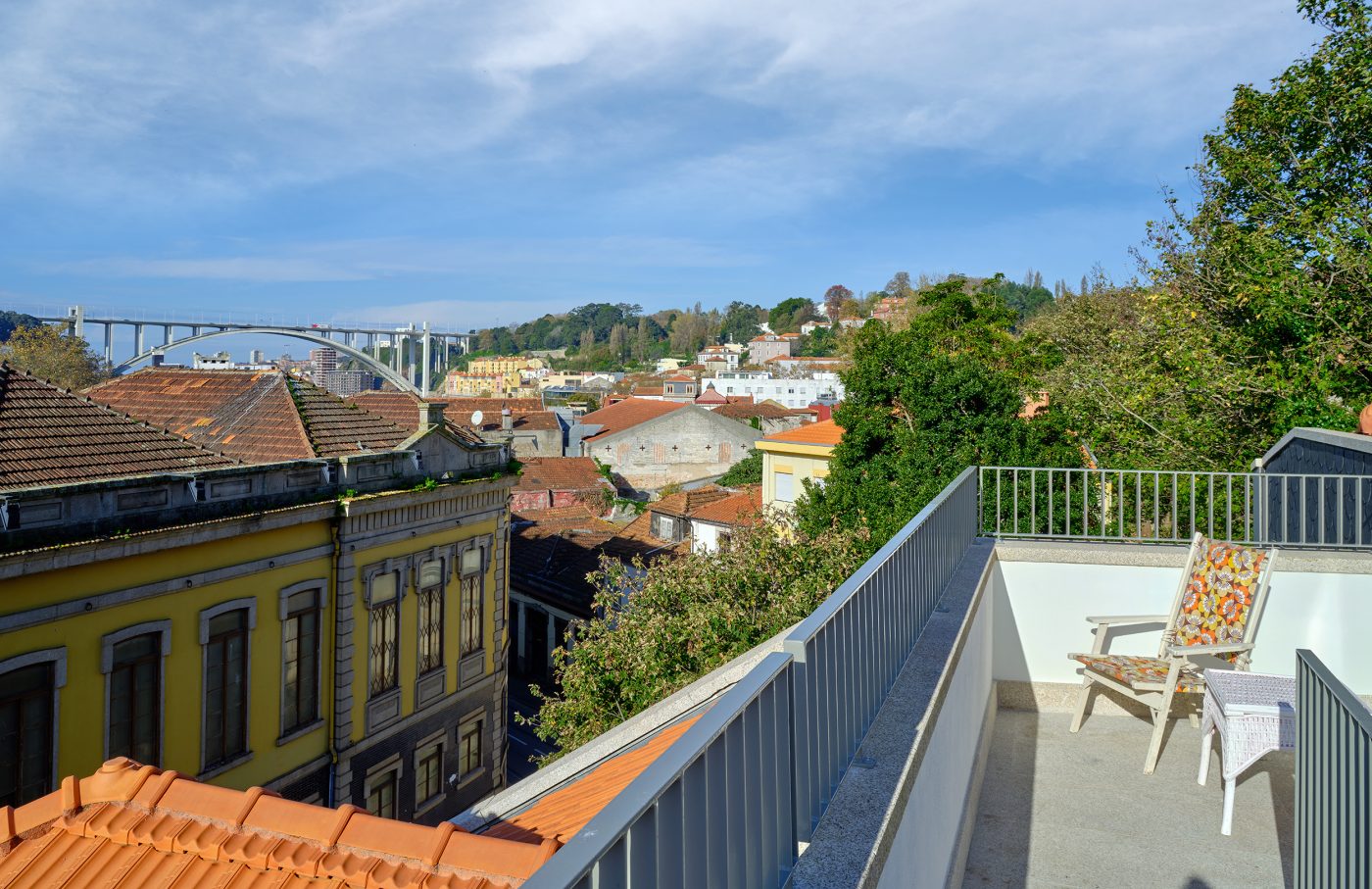
The rooftop
Finally, we must share with our guests, the views from the terrace of the Arrábida bridge, the gardens of the Palácio de Cristal and the Museu Romântico, that create a viewing point in a small roof garden.

